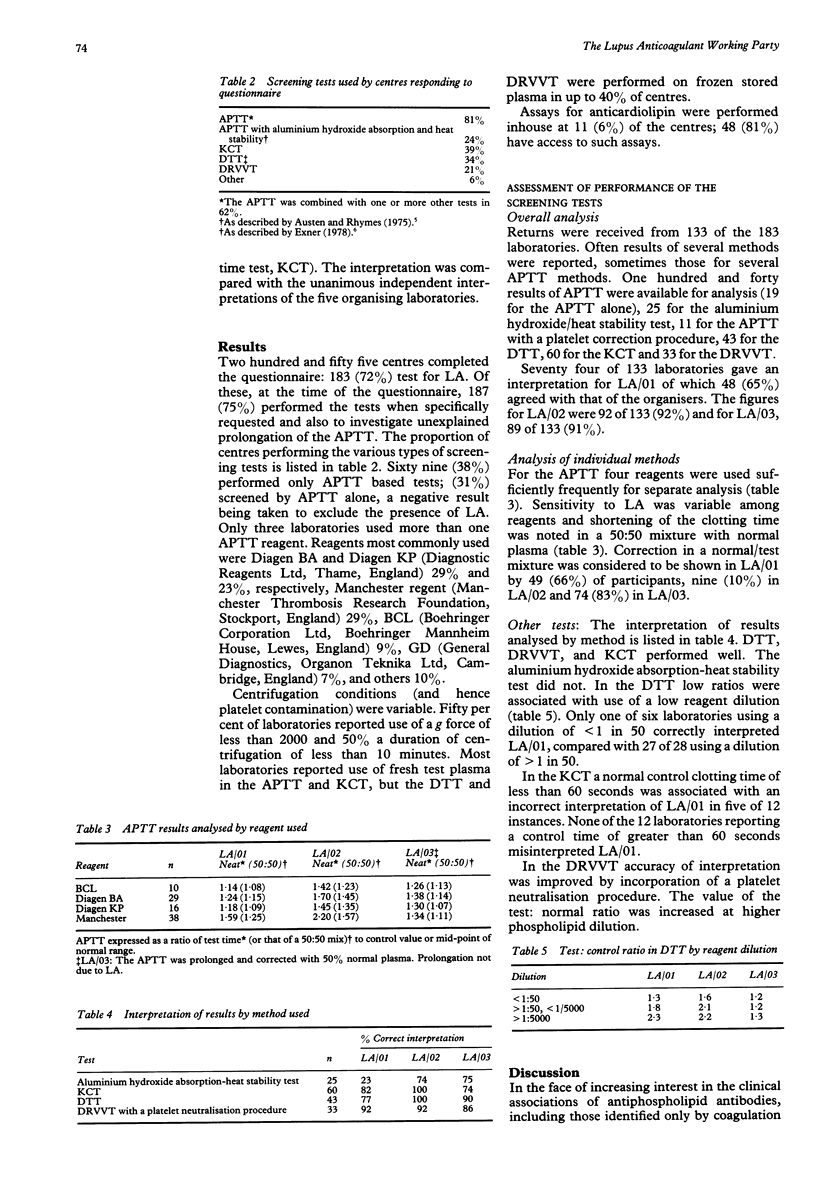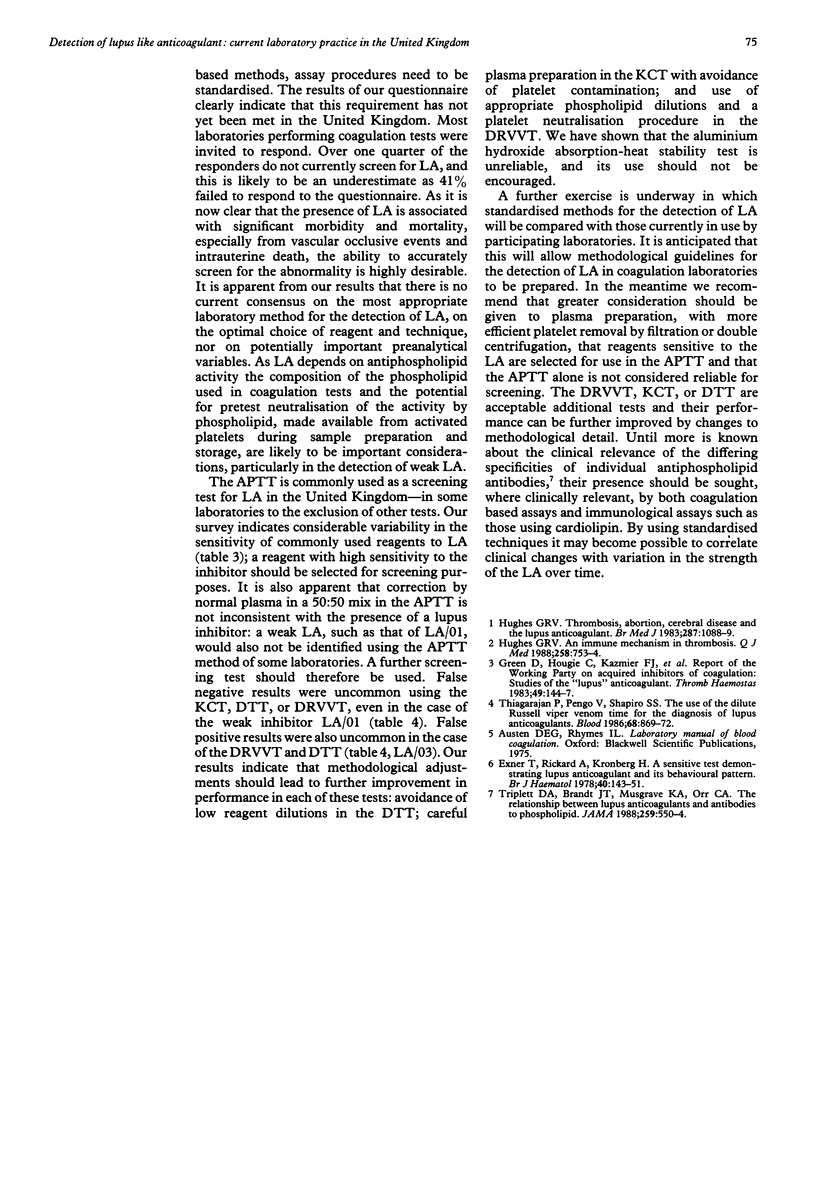Abstract
Various tests have been advocated for the detection of lupus like anticoagulants (LA) and related antiphospholipid antibodies, but there is no agreement on the most appropriate laboratory approach. Two hundred and fifty five of 433 hospital centres in the United Kingdom responded to a questionnaire. Many different tests were reported to be in use for screening for LA with considerable variation in plasma preparation, choice of reagent, and methodological details. Three freeze dried plasmas were subsequently assessed for the presence of LA by 183 laboratories. While 92% correctly identified a strong inhibitor and 91% a negative control, only 65% correctly identified a weak inhibitor. Pronounced variations in the suitability of commonly used reagents in the activated partial thromboplastin time test (APTT) were noted and important methodological features were identified in the kaolin clotting time, dilute thromboplastin time, and dilute Russell's viper venom time tests. It is concluded that careful plasma preparation, with avoidance of platelet contamination, use of a suitable test in addition to the APTT, and attention to methodological detail are essential for the reliable identification of LA, a clinically important inhibitor.
Full text
PDF


Selected References
These references are in PubMed. This may not be the complete list of references from this article.
- Exner T., Rickard K. A., Kronenberg H. A sensitive test demonstrating lupus anticoagulant and its behavioural patterns. Br J Haematol. 1978 Sep;40(1):143–151. doi: 10.1111/j.1365-2141.1978.tb03648.x. [DOI] [PubMed] [Google Scholar]
- Green D., Hougie C., Kazmier F. J., Lechner K., Mannucci P. M., Rizza C. R., Sultan Y. Report of the Working Party on Acquired Inhibitors of Coagulation: studies of the "lupus" anticoagulant. Thromb Haemost. 1983 Apr 28;49(2):144–146. [PubMed] [Google Scholar]
- Hughes G. R. An immune mechanism in thrombosis. Q J Med. 1988 Oct;68(258):753–754. [PubMed] [Google Scholar]
- Hughes G. R. Thrombosis, abortion, cerebral disease, and the lupus anticoagulant. Br Med J (Clin Res Ed) 1983 Oct 15;287(6399):1088–1089. doi: 10.1136/bmj.287.6399.1088. [DOI] [PMC free article] [PubMed] [Google Scholar]
- Thiagarajan P., Pengo V., Shapiro S. S. The use of the dilute Russell viper venom time for the diagnosis of lupus anticoagulants. Blood. 1986 Oct;68(4):869–874. [PubMed] [Google Scholar]
- Triplett D. A., Brandt J. T., Musgrave K. A., Orr C. A. The relationship between lupus anticoagulants and antibodies to phospholipid. JAMA. 1988 Jan 22;259(4):550–554. [PubMed] [Google Scholar]


